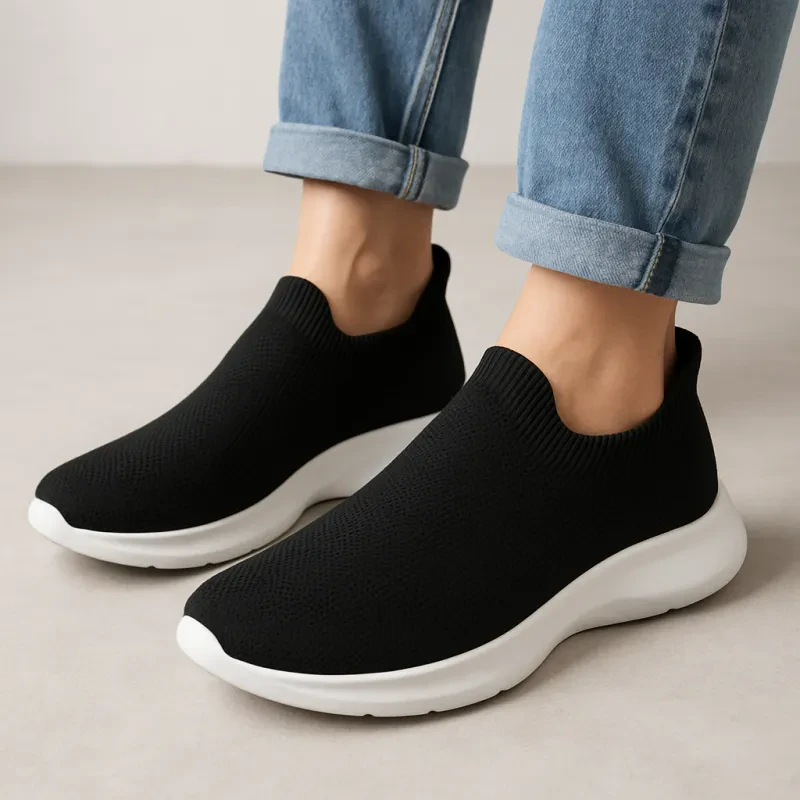Introduction:
Sneakers have transformed significantly since their inception, evolving from basic footwear to high-tech performance shoes embraced by athletes and fashion enthusiasts alike. The journey of sneaker technology reflects innovation that meets both practical needs and cultural trends. As new materials and designs have emerged, sneakers have shifted from simple athletic wear to essential items in everyday wardrobes.

From the early designs of the 19th century to the advanced cushioning and support systems seen today, the evolution of sneakers is marked by key milestones. Each advancement has led to improvements in comfort and performance, catering to diverse sports and lifestyles. Sneaker culture has grown as a major global phenomenon, influencing fashion and driving a vibrant resale market.
The impact of sneakers extends beyond their physical purpose. They symbolize status, creativity, and community, bridging gaps between sports, art, and everyday living. As sneaker technology continues to advance, its cultural significance only deepens, capturing the interest of various generations.
Key Takeaways
- The evolution of sneaker technology has changed how people view footwear.
- Key innovations have improved comfort and performance for various activities.
- Sneakers have become cultural icons, influencing trends and communities worldwide.
Historical Development
The history of sneaker technology reflects significant changes in materials, styles, and cultural influences. From the early designs of rubber-soled shoes to the arrival of basketball shoes and the merger of sports and street fashion, each phase has added to the sneaker's evolution and importance in modern society.
Origins and Early Innovations
The journey of sneakers began in the 19th century. The first rubber-soled shoes, known as plimsolls, emerged in England. Charles Goodyear’s invention of vulcanized rubber in 1839 made these shoes durable and flexible.
Keds, introduced in 1916, were marketed as the first official sneaker. This innovation paved the way for future designs. Converse All Stars, launched in 1917, further cemented the sneaker's place in culture. These shoes were originally created for basketball but quickly became popular for casual wear.
Rise of Basketball Shoes and Hip-Hop Influence
The 1970s and 1980s transformed the sneaker landscape significantly. Basketball players became influential figures, with Air Jordan launching in 1984. This sneaker, endorsed by Michael Jordan, revolutionized marketing in sports.
Hip-hop culture played a huge role in popularizing sneakers. Rappers embraced these shoes, using them as symbols of style and status. Artists and celebrities began to collaborate with sneaker brands, leading to the rise of sneakerheads, who collect and show off rare pairs. Sneakers became a key part of street style, merging athleticism with fashion.
The Intersection of Sports and Fashion
In the 1990s and 2000s, sneakers evolved beyond function into significant fashion statements. Brands like Nike and Adidas introduced innovative technologies, such as air cushioning and lightweight materials, appealing to both athletes and casual wearers.
Sneakers were no longer just for sports. They became focal points in fashion shows and everyday wardrobes. Celebrity endorsements by athletes and public figures solidified this trend. Sneakers are now staples in many closets, reflecting personal style and lifestyle.
The sneaker industry continues to grow, driven by innovation and cultural relevance, making it an essential part of modern footwear fashion.
Technological Advancements

Sneaker technology has advanced significantly, leading to better performance, comfort, and sustainability. Innovations in materials, design, and manufacturing processes have transformed sneaker functionality and appeal.
Innovative Materials and Design
The use of modern materials has changed how sneakers are made. Brands like Nike have introduced Flyknit, a lightweight and adaptable material that offers support and breathability.
In addition, rubber soles enhance grip and traction, making sneakers suitable for various sports and activities. Companies like Puma have also focused on durable materials that improve the overall comfort and longevity of the footwear.
Design processes have greatly benefited from technology. For example, 3D printing allows for customized sneaker designs, ensuring a perfect fit for individual wearers. This approach not only enhances design creativity but also reduces waste during production.
Performance-Enhancing Features
Sneakers now include various features designed to boost athletic performance. Cushioning technology, such as Nike's Air units, provides impact absorption, reducing strain on the legs. This innovation benefits runners and athletes during workouts.
Traction systems help stabilize the shoe on different surfaces, improving safety in sports like basketball and soccer. Companies like Adidas and Asics have developed specialized sole patterns that enhance grip.
Smart sneaker technology has also emerged. Some models integrate features to monitor running technique, heart rate, and calories burned. This advancement makes sneakers not just footwear but also performance-enhancing tools for athletes.
Sustainability and Manufacturing Processes
Sustainability has become a focus in sneaker production. Brands are increasingly using eco-friendly materials and processes to minimize their environmental footprint.
Nike and Adidas have launched lines using recycled materials in their products, showing a commitment to reducing waste. This commitment involves not just the shoes, but their packaging as well.
Manufacturing processes have adapted to include more efficient techniques. Innovations such as automated cutting and assembly reduce waste and energy use. This shift helps meet growing consumer demand for sustainable products while maintaining high performance and design standards.
Cultural and Market Impacts

Sneaker culture has significantly shaped both social norms and market trends. Collaborations between brands and designers, along with the booming resale economy, have transformed sneakers into more than just footwear. They have become status symbols and collectibles that resonate globally.
Collaborations and Limited Releases
Collaborations between sneaker brands and high-profile designers create excitement in the market. For example, Virgil Abloh's partnership with Nike brought unique designs that blended fashion and functionality, attracting diverse audiences. Brands like Adidas and Reebok also engage in similar collaborations, often releasing limited-edition models that generate buzz and drive up sales.
Limited releases encourage consumers to act quickly, as these shoes often sell out within minutes. This scarcity not only enhances brand appeal but also creates a sense of urgency among fans and collectors. Special designs often reference pop culture and art, making sneakers truly reflective of current trends.
Sneaker Resale Economy
The sneaker resale market has grown rapidly, becoming a billion-dollar industry. Resellers capitalize on high-demand releases, often selling exclusive sneakers at marked-up prices. Popular models like Air Jordans and Nike collaborations frequently fetch thousands of dollars in resale.
Platforms like StockX and GOAT specialize in facilitating these transactions, offering transparency and authentication. This resale market fuels a cycle where consumers buy the newest models, wear them briefly, and then resell them for a profit. This trend highlights the evolving relationship between sneakers as practical items and luxury collectibles.
Global Reach and Community
Sneaker culture has reached a global audience, influencing trends in various countries. Major brands like Nike and Adidas have established strong presences in regions such as Asia and Europe. These brands often localize their marketing strategies to resonate with diverse cultures.
Communities around sneakers thrive online and offline, with forums, social media groups, and local sneaker events. They serve as networks for sharing news, trade strategies, and organizing releases. This sense of belonging strengthens the bond between enthusiasts and solidifies sneaker culture as a vital part of modern social interaction.







